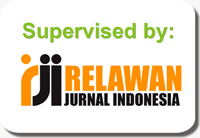A Bot Approach-Based Capacity Testing Automation for Online Video Games
DOI:
https://doi.org/10.31961/eltikom.v6i2.550Keywords:
Automation testing, Online game, Stress testingAbstract
Online games are a type of computer game that can be accessed using the internet network and played with other players to play the same game. With the advance in online game development, game developers are required to develop games that can be played by many players in one game, especially in the capacity of an online game server. Those needs can be achieved by utilizing bots. However, previous works only conducted bot-based testing for testing network capabilities. In this research, those works will be extended further ftotesting the capacity of a game server. The result of this research suggests that bot approach testing can simulate real players adequately. Other than that, the bot approach also can be scalable. However, the result also suggests that the bot approach still has some limitations as bots cannot simulate the dynamics shown by real players. Special attention is also needed towards clients utilized for executing the bots for them to be scalable.
Downloads
References
S. Ariyurek, A. Betin-Can and E. Surer, "Automated Video Game Testing Using Synthetic and Humanlike Agents," in IEEE Transactions on Games, vol. 13, no. 1, pp. 50-67, March 2021.
R. Ramadan and B. Hendradjaya, "Development of game testing method for measuring game quality," 2014 International Conference on Data and Software Engineering (ICODSE), 2014, pp. 1-6.
Q. Zhou, C. J. Miller and V. Bassilious, "First Person Shooter Multiplayer Game Traffic Analysis," 2008 11th IEEE International Symposium on Object and Component-Oriented Real-Time Distributed Computing (ISORC), 2008, pp. 195-200.
S. M. Shariff, H. Li, C. Bezemer, A. E. Hassan, T. H. D. Nguyen and P. Flora, "Improving the Testing Efficiency of Selenium-Based Load Tests," 2019 IEEE/ACM 14th International Workshop on Automation of Software Test (AST), 2019, pp. 14-20.
ISO 25010. (n.d.). ISO 25000 PORTAL. https://iso25000.com/index.php/en/iso-25000-standards/iso-25010.
Garousi, V., Briand, L. C., & Labiche, Y, "Traffic-aware stress testing of distributed systems based on UML models", In Proceedings of the 28th international conference on Software engineering (ICSE '06). Association for Computing Machinery, New York, NY, USA, 2006, 391–400.
Jiang, Z. M, “Automated analysis of load testing resultsâ€, In Proceedings of the 19th international symposium on Software testing and analysis (ISSTA '10), Association for Computing Machinery, New York, NY, USA, 2010, 143–146.
Ghalistan, G., Widowati, S., & Husen, J. H., “Pengembangan Kakas Pengujian Formal Detail Otomatis untuk Aplikasi Permainan Mo-bileâ€, 2020.
A. Bertolino, "Software Testing Research: Achievements, Challenges, Dreams," Future of Software Engineering (FOSE '07), 2007, pp. 85-103.
K. Sneha and G. M. Malle, "Research on software testing techniques and software automation testing tools," 2017 International Con-ference on Energy, Communication, Data Analytics and Soft Computing (ICECDS), 2017, pp. 77-81.
S. Thummalapenta, S. Sinha, N. Singhania and S. Chandra, "Automating test automation," 2012 34th International Conference on Software Engineering (ICSE), 2012, pp. 881-891.
Sagi, B. R., & Silvestrini, R., “Application of combinatorial tests in video game testing. Quality Engineeringâ€, 29(4), 2017, 745-759.
C. Cho, D. Lee, K. Sohn, C. Park and J. Kang, "Scenario-Based Approach for Blackbox Load Testing of Online Game Servers," 2010 International Conference on Cyber-Enabled Distributed Computing and Knowledge Discovery, 2010, pp. 259-265.
E. Enoiu, D. Sundmark, A. Čaušević and P. Pettersson, "A Comparative Study of Manual and Automated Testing for Industrial Control Software," 2017 IEEE International Conference on Software Testing, Verification and Validation (ICST), 2017, pp. 412-417.
I. Dobles, A. MartÃnez and C. Quesada-López, "Comparing the effort and effectiveness of automated and manual tests," 2019 14th Iberian Conference on Information Systems and Technologies (CISTI), 2019, pp. 1-6.
Divya Kumar, K.K. Mishra, "The Impacts of Test Automation on Software's Cost, Quality and Time to Market", Procedia Computer Science, Volume 79, 2016, Pages 8-15.
Patidar C. P, Dongre A. D., "An Automated Testing Model using Test Driven Development Approach. Orient", J. Comp. Sci. and Technol, 10(2), 2017, 385-390.
M. Cocar, R. Harris and Y. Khmelevsky, "Utilizing Minecraft bots to optimize game server performance and deployment," 2017 IEEE 30th Canadian Conference on Electrical and Computer Engineering (CCECE), 2017, pp. 1-5.
T. Alstad et al., "Minecraft computer game performance analysis and network traffic emulation by a custom bot," 2015 Science and Information Conference (SAI), 2015, pp. 227-236.
T. Alstad et al., "Game network traffic simulation by a custom bot," 2015 Annual IEEE Systems Conference (SysCon) Proceedings, 2015, pp. 675-680.
Andrewrk. et al., (2016) Prismarinejs/mineflayer. GitHub. [Online]. Available: https://github.com/PrismarineJS/mineflayer
Downloads
Published
How to Cite
Issue
Section
License
Copyright (c) 2022 Jurnal ELTIKOM : Jurnal Teknik Elektro, Teknologi Informasi dan Komputer

This work is licensed under a Creative Commons Attribution-NoDerivatives 4.0 International License.
All accepted papers will be published under a Creative Commons Attribution 4.0 International (CC BY 4.0) License. Authors retain copyright and grant the journal right of first publication. CC-BY Licenced means lets others to Share (copy and redistribute the material in any medium or format) and Adapt (remix, transform, and build upon the material for any purpose, even commercially).




